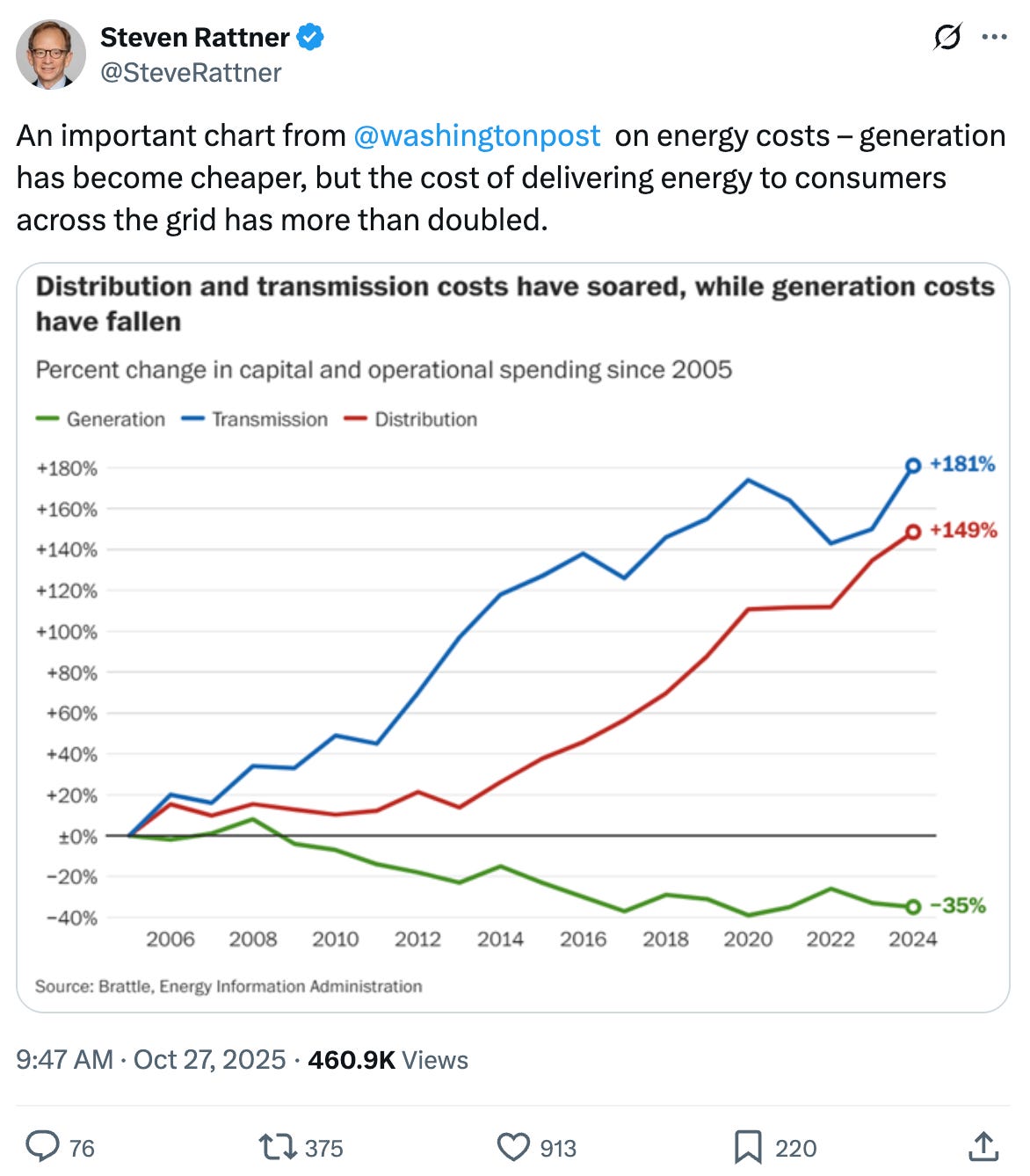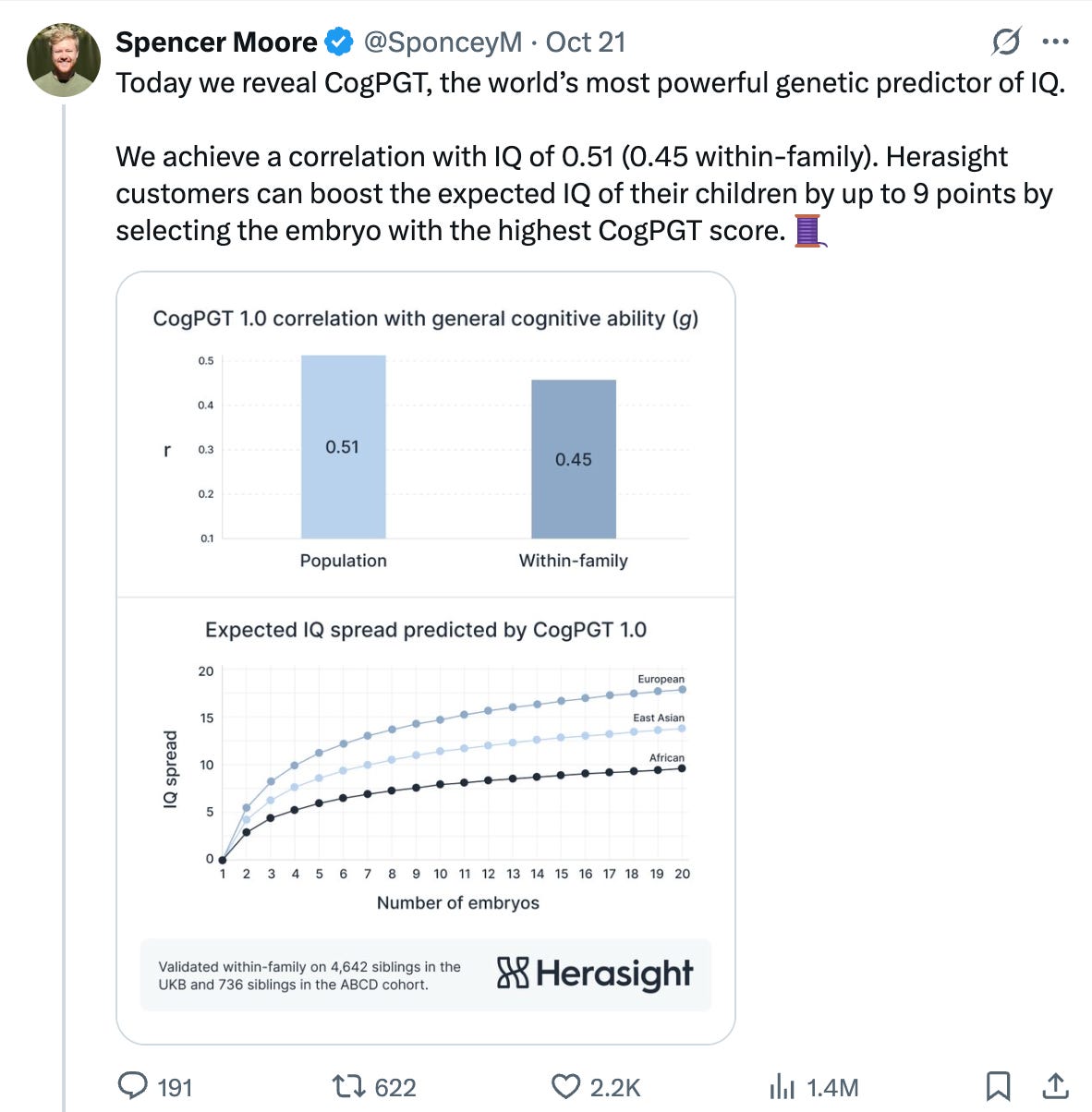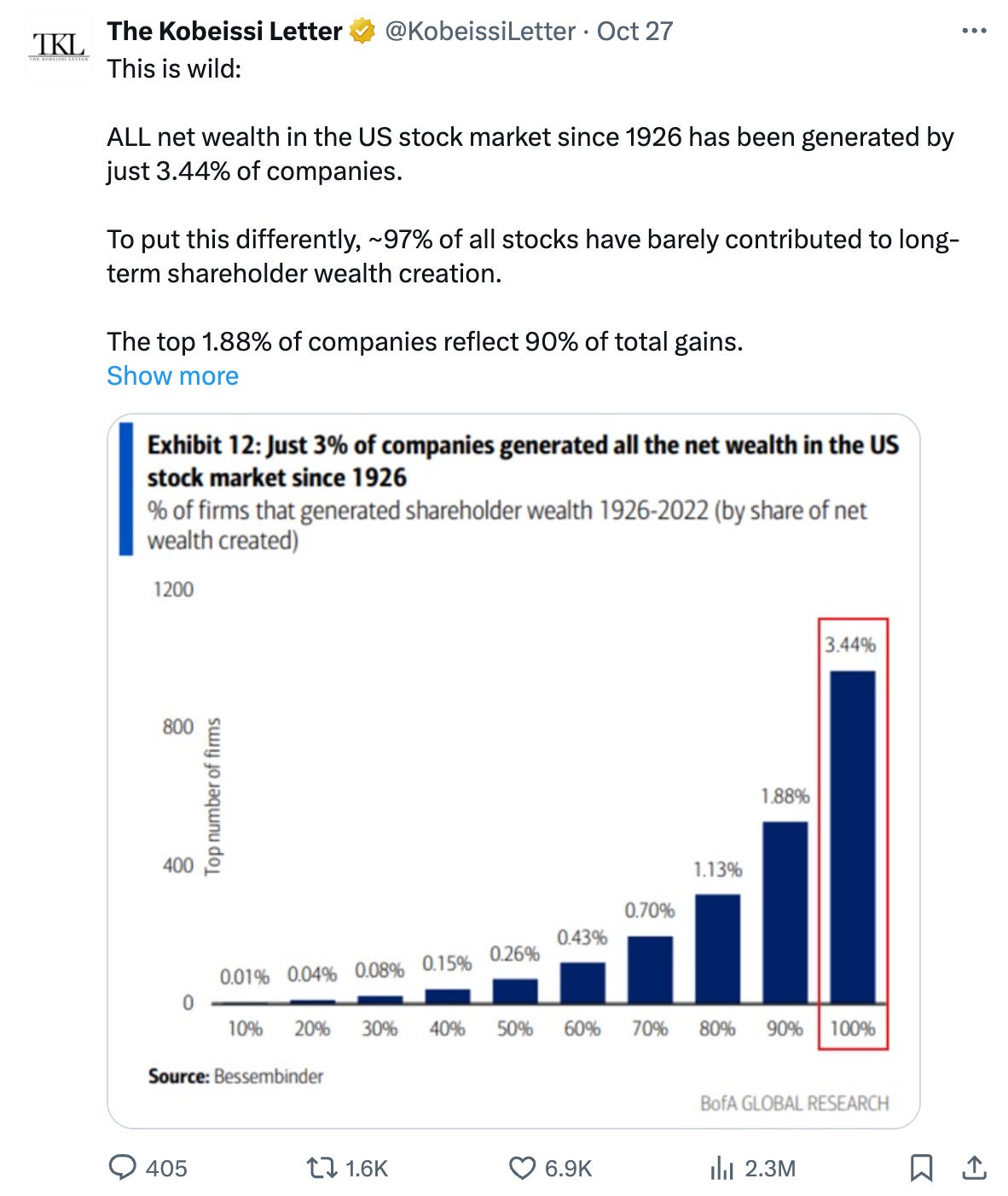WIRTW: OpenAI becomes For-Profit, Earnings Snapshot, and Fed Pivots
Earnings snapshot, OpenAI recapitalizes, Fed pivot, Elon on All-In, and what caught my eye on X.
Caught My Eye…
1) OpenAI’s Corporate Evolution
After months of speculation, the company has formalized its transition into OpenAI Group PBC, a for-profit public benefit corporation currently valued at $500 billion, controlled by the original nonprofit foundation. The shift ends its complex “capped-profit” experiment, where investor returns were previously limited to 100x, and clarifies ownership stakes that had been an open question since last year’s governance crisis.
The mission of “ensuring that AGI benefits all of humanity” will be shared across both orgs as the OpenAI Foundation will initially focus on a $25B commitment across two areas:
Health and curing diseases: Faster diagnostics, better treatments, and cures through the creation of open-sourced frontier health datasets, and funding for scientists.
Technical solutions to AI resilience: Supporting practical technical solutions to maximize AI’s benefits and minimize its risks.
The move was timed alongside a new definitive agreement with Microsoft, which allows both sides more flexibility for the “next phase” of their partnership. Microsoft now holds roughly 27% of the new entity (valued at ~$135 billion), with the rest split among investors, employees, and the nonprofit parent.
The deal extends Microsoft’s IP rights for both models and products through 2032 and now include models post-AGI (which will be determined by an independent expert panel).
Microsoft relinquishes certain veto and right-of-first-refusal powers in exchange for predictable access to future model families and ability to pursue their own paths to AGI with potential third-parties.
In effect, OpenAI’s reorganization closes one chapter of initial AI buildout and opens up a larger, more open path towards further scaling. OpenAI is already laying the groundwork for a potential IPO targeting up to a $1 trillion valuation, with internal discussions suggesting a possible filing in late 2026 and potential listing in 2027. The AI startup will seek to raise at least $60 billion from the offering which would make it the largest IPO in history.
2) Earnings Snapshot
Microsoft delivered a solid quarter with growth in the Azure cloud exceeding expectations and AI momentum continuing, but the stock dropped ~3%.
Why? Because investors focused less on the beat and more on the escalating AI CapEx that is increasingly eating into its operating cash flow. Management explicitly stated they were “short on capacity” in Azure, which implies missing revenue in the short-term until the larger buildouts are finalized.
Meta reported record quarterly revenue (~$51 billion), up about 26% year-over-year, easily beating forecasts. But the company’s net income collapsed due to a $16 billion one-time tax expense tied to a new corporate tax law adjustment. Excluding that charge, Meta still spent heavily on R&D, data centers, and AI infrastructure, pushing total CapEx toward $97 billion next year, almost double the prior year.
This caused EPS to come in around $1.05/share, far below analyst expectations, causing the stock to plunge ~11% in one of the worst single-day moves in its recent history.
Alphabet delivered its first-ever $100 billion quarterly revenue, driven by the strong ad business and a booming Google Cloud. Its cloud business was the fastest-growing segment, with a backlog reaching an impressive $155 billion.The stock rose ~2.5% on the day to a new all time high.
Even in a saturated market, heavy AI/Cloud bets are being rewarded when backed by mature monetisation. For investors: this is the benchmark of “growth with execution”.
Apple reported a record for its September quarter revenue ($102.5 billion) which nudged the stock higher, primarily driven by all-time high revenue from its high-margin Services division. Apple’s Services segment is an umbrella for a wide range of recurring revenue sources that monetize its massive installed base of over 2 billion active devices worldwide. The key pillars being the App Store (30% commissions), Licensing (Google search on Safari), Subscriptions (Apple Music), iCloud Services, and other Financial Services & Support (Apple Pay).
Amazon delivered a strong quarter, beating analyst expectations across total revenue, AWS revenue, and EPS. The significant beat was led by strong retail sales, cost efficiencies and AWS strength. The stock jumped ~13%+ in after-hours as the market appreciated the clear AI-cloud momentum, plus incremental signs of operational efficiency with the recent lay-offs.
The pattern this week is instructive: growth alone isn’t enough as the market is increasingly focused on how growth is delivered, at what cost, and with what margin profile. Companies like Alphabet and Amazon, which showed both strong growth and clean execution, were rewarded. Meanwhile Microsoft and Meta performed well in headline metrics but triggered caution on cost and strategic clarity.
3) Federal Reserve: The Policy Pivot
The Fed’s October 29 meeting marked a clear pivot in U.S. monetary policy. The federal-funds rate was trimmed by 25 bps to 3.75%–4.00%. Crucially, the Federal Open Market Committee (FOMC) also announced it would conclude the reduction of its aggregate securities holdings (Quantitative Tightening, or QT) on December 1, effectively stopping the contraction of the balance sheet. The vote was not unanimous, with two dissents highlighting the division within the Committee regarding the pace and necessity of the reversal.
The Committee still promises to achieve maximum employment and inflation at the rate of 2 percent over the longer run. Inflation still remains “somewhat elevated,” but the stronger signal is from the labor market: job gains have decelerated and downside risks to employment have grown.
UPS has finished cutting 48,000 jobs this year, while Amazon is targeting 30,000 and has started by letting go of 14,000 corporate roles this Tuesday. Meanwhile Paramount started to layoff 2,000 workers across its company this Wednesday, as GM plans a cut of 1,200 factory jobs.
The Committee assessed that the balance of risks has shifted toward the downside for jobs, suggesting the Fed is now more concerned about preventing a labor-market collapse than chasing every decimal of inflation. Markets are expecting further cuts, but Chair Powell explicitly cautioned that a December rate reduction is not assured. The Fed remains data-dependent, citing limited visibility due to the federal government shutdown and emphasizing that policy is “not on a preset course.”
Learn With Me and My Friends…
Watch All-In: 3 Years of X, OpenAI Lawsuit, Bill Gates, Grokipedia & The Future of Everything
A Primer on the Magnificent 7 (every company except for Microsoft, which will come out later this month)
Other Reading…
NVIDIA and General Atomics Advance Commercial Fusion Energy (NVIDIA)
New Diligence Challenge: Uncovering AI Risks and Opportunities (Bain & Company)







The OpenAI shake-up is huge; feels like a new phase for the whole AI ecosystem. But I also found Meta’s $16B tax hit interesting. It wasn’t from operations but from new U.S. tax rules that forced companies to revalue deferred tax assets. Those same rules now let firms fully expense R&D that had to be amortized over the past few years, so Meta could see that swing reverse in 2025. If so, it might translate into a multi-billion-dollar boost to earnings that the market hasn’t really priced in yet.
OpenAI didn’t ‘go for-profit.’ It went real-world.
You can’t build AGI on idealism alone. The nonprofit keeps the halo. The for-profit builds the machine.
Together, they prove what every founder learns the hard way: vision needs a revenue model.